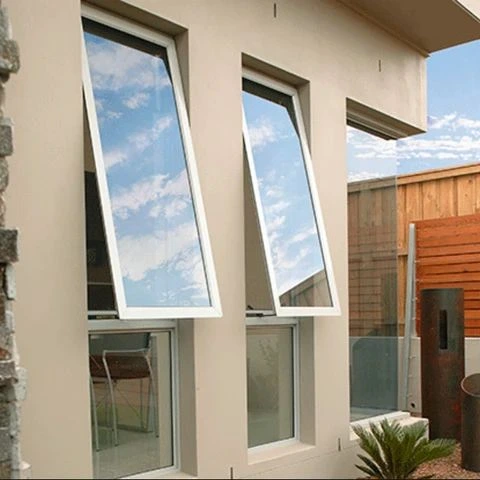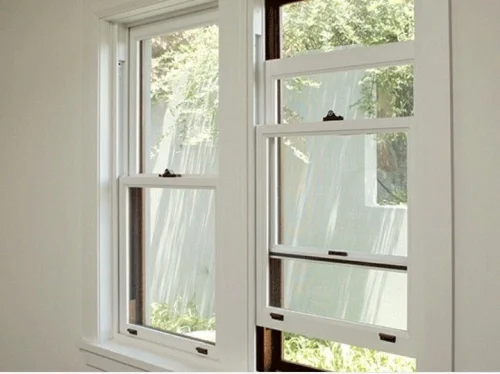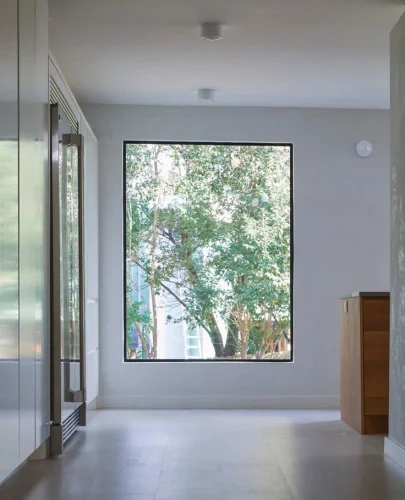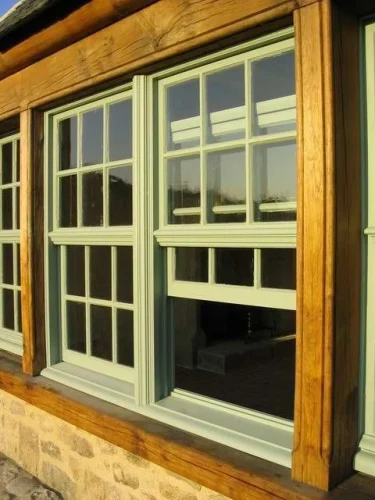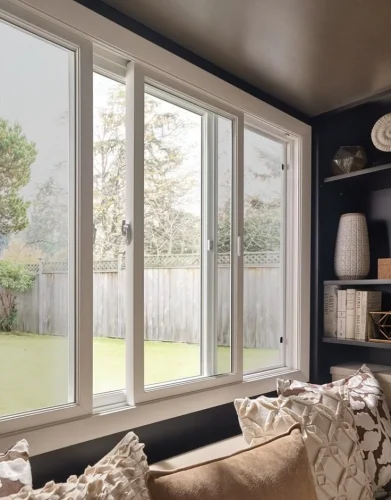
How to Choose the Right Water Pipes for House Waterworks
March 15, 2025
How to Infuse Timeless Charm of Village Aesthetics into Your South Indian House
March 17, 2025Designing or renovating your home is a moment of pride and joy, but among it all, windows are often overlooked. We focus on the design, the glass type, or the frame colours, but forget about the window frame dimensions. Believe it or not, the window dimensions and size can affect your home’s aesthetics, comfort, and energy efficiency.
Windows that are disproportionate to their frames can cause air leaks and poor insulation, causing your energy bills to rise and making your space feel drafty. Well-proportioned windows can improve air quality, improve aesthetics, and create a more comfortable home environment.
So, how to know the perfect window frame dimension? Let’s find out!
Why Do Window Frame Dimensions Matter?
Window frame dimensions can affect your home style, aesthetics, and functions. Here’s why window size and frame matter:
1. Energy Efficient
Well-proportioned windows can regulate the temperature indoors. Too large or too small windows can cause excessive heating or cooling, natural lighting, and ventilation.
2. Visual Appeal
The perfect window frame can improve the aesthetics of your home. The wrong size can disrupt the balance of your interior and exterior home design.
3. Comfort
Windows can affect the air, sunlight, and privacy. The correct window frame dimensions can ensure that your room is comfortable, bright, and airy.
Also Read: How uPVC Combination Windows Help in Reduce Energy Bills?
The Standard Size of Window You Need
Picking the right window size isn’t just about the visual appeal, it’s also about its function, ventilation, and energy efficiency. So, when you know the right dimensions for the window, you can optimise your space effectively. Here are the standard window frame dimensions to know!
1. Awning Windows
Source: Pinterest
Awning windows hinge at the top and open outward from the bottom. These are a good choice for a well-ventilated home, even during monsoons. The standard window sizes of an awning window in feet can be:
- Height: 1 foot (30cm) to 3 feet (90cm)
- Width: 2 feet (60cm) to 4 feet (120cm)
2. Casement Windows
Source: Pinterest
Casement windows are what you can typically find in homes. They have side hinges and swing outwards. They can be ideal for hard-to-reach areas such as kitchen sinks and bathrooms as they have better ventilation. The standard window size in feet for casement windows can be:
- Height: 4 feet (120cm) to 6 feet (180 cm)
- Width: 2 feet (60 cm) to 8 feet (240 cm)
3. Double-Hung Windows
Source: Pinterest
Double-hung windows have two sashes that move up and down. These windows are also good for maximum ventilation and, since they swing outwards, they can be an ideal choice for patio windows or walkways. The standard window measurements for double-hung windows can be:
- Height: 3 feet (90cm) to 6 feet (180cm)
- Width: 2 feet (60cm) to 4 feet (120cm)
4. Picture Windows
Source: Pinterest
Picture windows or fixed windows don’t open, however, they allow plenty of natural light to come in. These windows can be ideal for living spaces, bedrooms, and areas with high ceilings. Picture windows’ standard size in feet can be:
- Height: 1 foot (30cm) to 8 feet (240cm)
- Width: 2 feet (60cm) to 8 feet (240cm)
5. Single Hung Windows
Source: Pinterest
These windows are similar to double-hung windows but have a fixed top sash. Single-hung windows are common in homes as they are a good choice for ventilation and a traditional look. The standard size of single-hung windows in feet can be:
- Height: 3 feet (90cm) to 5 feet (150cm)
- Width: 2 feet (60cm) to 4 feet (120cm)
6. Sliding Windows
Source: Pinterest
As the name suggests, sliding windows open by sliding horizontally along a track. They are ideal if you’re looking to save space. Sliding windows are good for rooms where outward swinging isn’t an option for windows such as balconies or walking areas. The standard window frame dimensions for sliding windows can be:
- Height: 2 feet (60cm) to 4 feet (120cm)
- Width: 3 feet (90cm) to 5 feet (150cm)
How to Choose the Right Window Size?
1. Room Function
Each room has its functions, so the window frame you choose should depend on that. Living rooms and kitchens need large windows for more air and light, whereas bathrooms need small windows.
2. Home Design
The window frame dimension can also depend on the design of your home. Large windows suit modern homes better, whereas small and detailed frames suit older and traditional homes better.
3. Natural Lighting
East-facing rooms get more natural lighting in the morning while west-facing rooms often need heat control during the afternoon. This is another factor when choosing the right window frame dimensions.
4. Building Regulations
Most building codes have specified window frame dimensions and window placements. Check with your building before you pick a window size.
Related Read: Improve Your Thermal Insulation With The Best uPVC Windows
Final Words
Windows are not just glass panes protecting you from outside elements. Windows can be the key to your home’s visual appeal, comfort, and energy saving. When you know the right window frame dimensions, you create a beautiful, energy-efficient, and sustainable space. If you’re considering adding new windows or upgrading your old ones, then know that the right window size can make all the difference.
About Green Fortune
Green Fortune believes in eco-friendly, energy-efficient, and stylish home solutions. Our range of uPVC doors and windows can be a perfect fit for any home. Whether you’re looking for sustainable designs or comfort options, we have it all. Explore Green Fortune products by clicking here.
Also Read: What Are the Latest Innovations in Energy-Efficient Window Technology?
Frequently Asked Questions (FAQs):
Q. What style of window is most energy efficient?
Awning windows and casement windows can be more energy-efficient than double-hung windows. These types of windows are simple and their seal can tighten when wind blows. This makes them more energy efficient.
Q. What is the standard size of a house window?
In homes, the standard window dimensions can be typically 24 inches (2 feet) to 48 inches (4 feet) in width and 36 inches (3 feet) to 72 inches (6 feet) in height.
Q. Are large windows energy-efficient?
Large windows can be energy-saving, especially with triple or double glazing. Large window frame sizes can lower electricity bills by regulating indoor temperatures.









